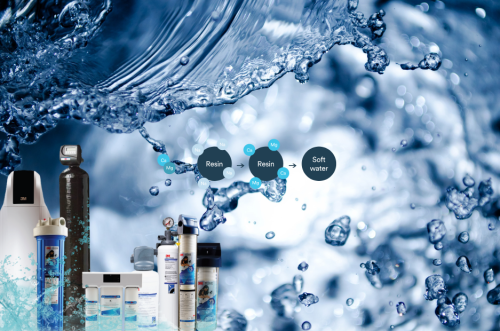Overview of Hard Water Challenges
A concise guide to hard water challenges, market trends, common technologies, environmental aspects, and the impact on households and industries in Bangalore and across India.
India
Large portions of India’s mun icipal and groundwater contain high levels of calcium and magnesium, causing widespread hard water issues. Rapid urbanization and rising industrial demand are increasing adoption of water softening technologies across urban centers and industrial hubs. South India — including Bangalore — leads the national market due to severe hardness in municipal and borewell water supplies.
icipal and groundwater contain high levels of calcium and magnesium, causing widespread hard water issues. Rapid urbanization and rising industrial demand are increasing adoption of water softening technologies across urban centers and industrial hubs. South India — including Bangalore — leads the national market due to severe hardness in municipal and borewell water supplies.
Bangalore
Bangalore’s water supply comes from the Cauvery River and numerous borewells; borewell water frequently shows high mineral content because of underground rock composition. Hardness commonly exceeds 200 mg/L as CaCO₃ in many areas, producing several visible and practical problems:
- Scaling and limescale buildup on tiles, faucets, showerheads, and inside appliances.
- Reduced lifespan and performance of washing machines, geysers, and dishwashers.
- Higher laundry and detergent usage, plus recurring stains on clothes and utensils.
- Skin dryness, hair fall, and irritation reported by residents.
Market Trends and Growth
National Market Snapshot
| Parameter | Value/Trend |
| Market Size (2024) | $611–$816 Million |
| Forecast (2030/2033) | $930–$1,352 Million |
| CAGR (2025–2033) | 5.3%–8.6% |
| Fastest Growing Region | South India (incl. Bangalore) |
Growth drivers include urban migration, awareness of hard water impacts, requirements in new housing projects, and growing industrial water treatment needs. South India — and Bangalore in particular — is one of the fastest-growing regions due to higher hardness levels and stronger demand for water treatment solutions.
Bangalore and South India
Southern metros form the largest and fastest-growing market because of heavy reliance on borewell and tanker water, scale-related maintenance costs, and developers increasingly including water softeners in new projects.
Key Water Softening Solutions
 1. Salt-Based Ion Exchange Softeners
1. Salt-Based Ion Exchange Softeners
These are the most widely used solutions for whole-house and commercial/industrial applications. Modern units feature automated regeneration cycles and require periodic salt top-ups.
2. Salt-Free Conditioners (TAC / Sequestration)
Popular among eco-conscious households and in brine-restricted areas. These systems alter mineral behavior to prevent scale without chemically removing hardness.
3. Smart / IoT-Enabled Softeners
IoT-enabled softeners are gaining adoption in urban centers. They offer real-time monitoring, auto-adjusted regeneration, and mobile alerts for maintenance — fitting well with smart-home and smart-city trends.
Industrial and Municipal Use

Industries such as textiles, food processing, and pharmaceuticals in Bangalore depend on water softeners for boiler feed and manufacturing processes that require consistent, high-quality water. Industrial systems focus on reducing maintenance, meeting discharge and brine-management regulations, and optimizing water and energy consumption.
Regulations and Environmental Aspects
Awareness about brine discharge is increasing. Certain regions are exploring tighter disposal rules to avoid salinization of soil and groundwater. In agriculture- or groundwater-sensitive zones, salt-based softeners may be discouraged. New market entrants emphasize eco-friendly, low-salt, or salt-free models to align with sustainability goals.
Impact for Bangalore Households and Businesses
For Households
- Whole-house softeners can reduce appliance breakdowns—studies and vendor reports often cite reductions up to ~50%—lower maintenance costs, and extend plumbing fixture life.
- Residents typically notice softer skin and hair and reduced soap and detergent consumption.
For Businesses and Industries
- Soft water prevents scale damage to boilers, heat exchangers, and pipelines, lowering downtime and production loss.
- Many industries consider water softeners essential for consistent product quality and operational efficiency.
Summary: Key Points for Bangalore & India
National Market Snapshot
| Feature | India | Bangalore (example city) |
|---|---|---|
| Market Size & Growth | $611M–$816M (2024); South India leads | High demand due to hard groundwater; major growth market |
| Common Water Hardness (as CaCO₃) | >180 mg/L in many areas | 200–400 mg/L in many localities |
| Main Water Sources | Borewell, river, municipal | Cauvery river, borewells, tankers |
| Appliance Impact | Scaling, reduced appliance lifespan | Frequent breakdowns, clogged pipes |
| Technology Trends | Shift to smart & eco-friendly softeners | Growing adoption of salt-free and IoT-enabled systems |
| Regulations / Policy | Rising awareness of brine discharge and regulation | Some societies mandate softeners; compliance considerations |
Growth drivers include urban migration, awareness of hard water impacts, requirements in new housing projects, and growing industrial water treatment needs. South India — and Bangalore in particular — is one of the fastest-growing regions due to higher hardness levels and stronger demand for water treatment solutions.
Conclusion
Bangalore exemplifies India’s hard water challenge: mineral-heavy borewell water, visible damage to plumbing and appliances, and growing demand for efficient, eco-friendly water treatment. As urbanization accelerates in South India, demand for smart and sustainable water softening solutions will continue to expand across both households and industry.

